This week's New Listings features an array of items related to political campaign parades, in particular the raucous spectacle of the torchlight parade. As is often the case with our hobby, the items that remain from these events provide a tangible reminder of a time, place and setting that we are far removed from. One of the interesting things about history is that it was at one point merely the present, a fleeting moment in time inhabited by individuals seeing it unfold before them. Those few relics that survive the passage of time are a window into a "present" that has long since passed.
Parades in American communities probably began organically as outgrowths of local celebrations of the nation's birth and celebrating the veterans of our American Revolution. The earliest political parades, according to Edmund Sullivan in his book Collecting Political Americana, were simple affairs, where a candidate would escorted into town by the volunteer fire brigade and deliver speeches from the steps of City Hall, outside (and sometimes inside) the local tavern, or from the pulpit of the local church.
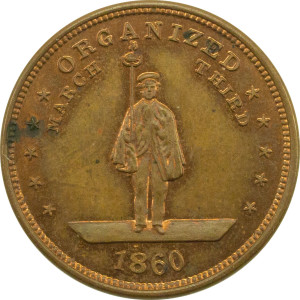
The first major step in the evolution from these simple affairs to the later grand celebrations of the torchlight parade phenomenon that would dominate the political campaign landscape through its peak in the 1888 campaign where Grover Cleveland bested Benjamin Harrison, occurred due to a visit by then-candidate Abraham Lincoln to Hartford, Connecticut in March of 1860. A group of enthusiastic young-men self-organized themselves into a company they called the "Republican Wide-Awakes of Hartford." Adding kepis and capes to their ordinary business suits, they welcomed the candidate with a resplendent torchlight parade. The capes the marchers wore served a dual purpose, adorned with the candidate or marching group's name while catching the coal oil drippings that the crude torches would drop. By the time of Lincoln's victory in November, there were hundreds of Wide-Awakes groups throughout the eastern and midwestern states. Lincoln would later credit the Wide-Awakes with playing no small part in helping him secure the nomination and subsequent victory.
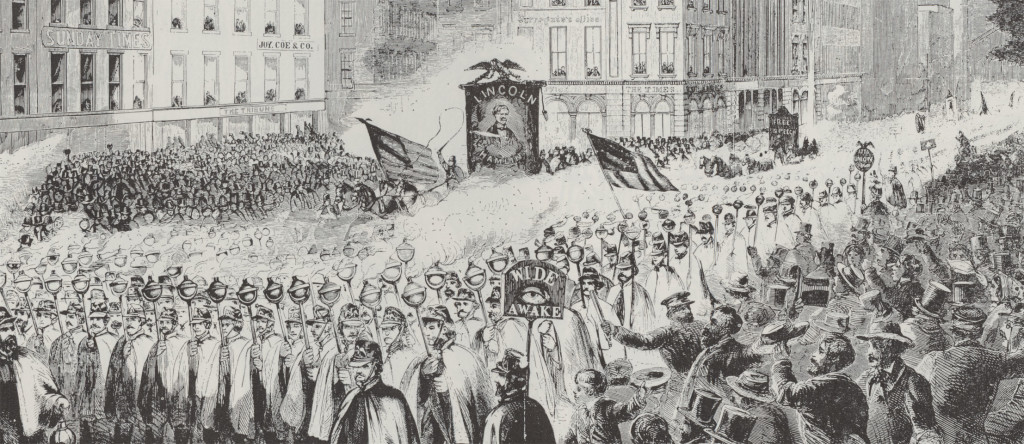
"Grand Procession of Wide-Awakes"
The torchlight parades of 1860 come to life in this description from Harper's Weekly, published in October 13 of that year.
Thousands of torches flashing in high, narrow streets, crowded with eager people, and upon house fronts in which every window swarms with human faces; with the mingling music of scores of military bands, and the rippling, running, sweeping, and surging sound of huzzas from tens of thousands... with the waving banners and moving transparencies of endless device; and through all... the splendor of exploding fireworks, of every color - these combined, at night, are an imposing spectacle; and these everyone in the city saw at the Wide-Awake festival on Wednesday night.
Seen through this lens, it's not hard to see why such rousing entertainments as the nighttime torchlight campaign parade caught on like... well... wild fire.
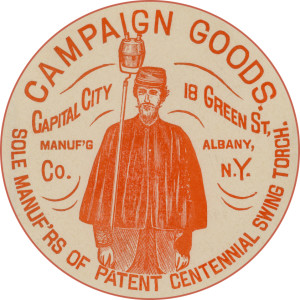
Throughout the heyday of the political campaign parade that started in 1860 and climaxed in 1888, many entrepreneurs and manufacturers sprang up to fill the needs of the enthusiastic masses, offering a variety of parading products while introducing many celebration innovations along the way.
According to Sullivan, torches can be divided into two major categories: the simple canister torch, and the platform torch. A platform torch consists of larger fuel reservoirs with multiple burners, intended to light a speaker platform as opposed to the canister torches which were intended to be carried.
Canister torches themselves come in seemingly endless varieties of construction, invention, size and shape. The earliest torches were surely homemade affairs fashioned of tin pails (filled with coal oil in the early days and later kerosene) with a bit of metal pipe soldered to the top to support a cotton wick and affixed to a wooden pole. The earliest manufactured torches were of simple construction, the first major innovation being attaching the torch head to the pole by means of a swivel support arm to keep the burner upright while performing marching maneuvers. Numerous patents were applied for differing methods of solving the problem of keeping the burners upright as inventive suppliers came up with elaborate gyroscopic means produced in a variety of configurations. Patents were filed for many figural torch configurations, including star shapes, a pine cone torch for the 1884 Blaine campaign celebrating his home state of Maine, and even one in the shape of a beaver top hat for the 1888 Benjamin Harrison campaign. A particularly desirable variety is the red, white and blue painted globe ballot box torch of 1880, which is made of a glass fuel reservoir between two tin plates at top and bottom, the plates in turn connected by turned tin posts. Another variety of torch is the "rifle torch," which substitutes the simple carrying pole for a wooden rifle. The rifle torch was a perfect match to the military style garb and presentation or maneuvers, or arms, of the well-organized campaign parade troupes.
Other than torches, there is a variety of parading accoutrement available. The uniforms and accessories make for bold display pieces for a political collection. Hats, kepis and helmets, some even with torches affixed are notable. Capes can bring a premium depending on decoration, vintage and of course condition. Canes and swords were a common accessory of the well-dressed campaign parader. And as proof of the impossible to ignore significance of the torchlight parades of the day, some of these canes are even equipped with a screw off that reveals a wick and burner top so as to double as torches as well.
Other relics of the torchlight parade include paper lanterns, transparencies consisting of metal or wood frames supporting images on glass intended to be illuminated by a candle or torch inside the frame, street banners and signs, and the ephemera of the campaign suppliers themselves.
If you'd like to learn more about the history of campaign parades and torches, I'd highly recommend Herbert R. Collins' Political Campaign Torches, a remarkable reference resource.
Enjoy our offerings of campaign parade materials.

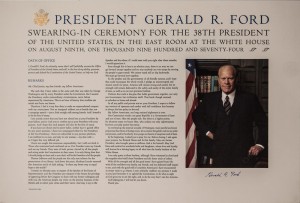
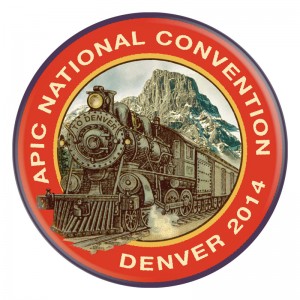
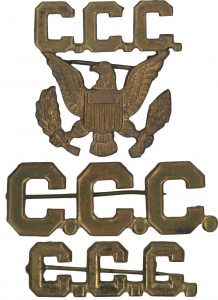 Civilian Conservation Corps brass badges.
Civilian Conservation Corps brass badges. The iconic N.R.A. eagle logo and "We Do Our Part" slogan.
The iconic N.R.A. eagle logo and "We Do Our Part" slogan.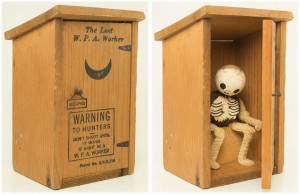 A lighthearted look at a "lost" WPA worker
A lighthearted look at a "lost" WPA worker
 "Grand Procession of Wide-Awakes"
"Grand Procession of Wide-Awakes"



